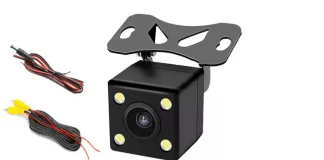Unlocking the Secrets of Android Headunit Updates
If you’ve ever wondered why your Android Headunit isn’t rocking Google’s latest Android version, you’re not alone. In this deep dive, we’ll unravel the mysteries of Android versions and updates in the realm of Headunit systems.
Seamless Integration with Must-Have Android Car Apps
Picture this: your Android Headunit seamlessly syncs with mainstream Android apps like Google Maps, Waze, Spotify, DABz, Car Launchers, ZLink, and AndroidAuto. But there’s a catch – they perform best with Android versions 6.0 (API level 23) and above. Let’s explore how this compatibility dance unfolds.
The Delectable Saga of Android 10 ‘Queen Cake’
Meet Android 10, codenamed ‘Queen Cake,’ which embarked on its journey on September 3, 2019, with API level 29. Yet, it took months of hard work to cook up a stable Android Headunit release. Fast forward to today, and even though security updates for Android 10 bid farewell on March 6, 2023, it’s still a rock-solid platform for in-car apps. But why the love affair with this classic? We’ve got the answers.
Why Android 10.0 Continues to Rule
Have you ever wondered why the latest Android versions like ‘Snow Cone’ and ‘Tiramisu’ aren’t making their way to your Headunit? It’s because Android 10.0 reigns supreme. But this isn’t just a love story; it’s about rock-solid performance and unwavering stability. We’re holding onto this version because it ensures a glitch-free driving experience with top-notch quality.
The Road to New Android Versions: A Rocky Journey
When Google unleashes a new Android version, it’s like a starting gun for developers. But in the world of Android Headunits, it’s a marathon, not a sprint. The first hurdle? Chip manufacturers need to provide Software Development Kits (SDKs) to developers. Once that baton is passed, the development team embarks on the incredible journey of tailoring it to fit the unique needs of the Android Headunit system. And trust us, it’s a wild ride.
Why’s it wild? Because Android Headunits are a breed apart. They’re not your typical Android devices. They come with specialized screen resolutions, backup camera wizardry, power-packed sound systems, and, often, CAN-BUS integration. All of this sets them on a path less travelled in the Android universe, demanding attention to detail that’s second to none.
Unleashing the Debugging Heroes
Enter the debugging phase, where heroes are made. High-end manufacturers like ATOTO, Pumpkin, and Joying are relentless in this phase, investing thousands of hours in testing to ensure system stability. Think of it as the Avengers assembling to protect the universe – your universe, in this case.
What’s the goal? A flawless driving experience with no bugs or glitches. This isn’t just testing; it’s an art form, a testament to responsible software development.
How long does this hero work take? Usually, a good 10 to 18 months. It’s no small task, but when your ride is at stake, it’s time well spent.
Bumpy Roads: Contrasting Approaches
Not all heroes wear capes, and not all manufacturers follow the same path. Some take the express lane, rushing new Android versions to market within 3 to 6 months. But there’s a catch – smaller development teams and shorter timelines can introduce risks.
Fast-tracking can compromise testing and quality assurance, jeopardizing the reliability and safety of your ride. Bugs, slowdowns, reboots – it’s like driving on pothole-ridden roads.
High-end manufacturers know the importance of system stability and quality. For them, a reputation for reliability is non-negotiable. But beware of the dark side – some manufacturers may play the deception game, claiming to run Android 10 when it’s actually Android 4.4.4. Buyer beware!
Striving for Excellence: Rigorous Testing
While some cut corners, high-end Android Headunits are all about quality and reliability. Compatibility and stability are their holy grail, leaving no room for deception often found in budget listings. Our advice: research, read reviews, and choose wisely. Quality is worth it.
Android 10.0 remains the gold standard for high-end automotive manufacturers and system integrators. Transitioning to new Android versions is a complex process that demands time and resources to ensure an impeccable driving experience.
In Conclusion
Low-Cost Devices: The ‘KitKat’ Legacy
Now, for the low-cost players, it’s a different game. They stick to the ‘KitKat’ legacy (Android 8.1go), better suited for their modest hardware. But here’s the twist – some may try to pass as high-end, even claiming unannounced Android versions. So, tread carefully when exploring these options.
High-End Excellence: Android 10 Reigns Supreme
For the high-end players, Android 10.0 remains the undisputed champion. Only when popular apps or cutting-edge hardware demand it will they shift to higher API levels and newer Android versions. Excellence is their hallmark.







